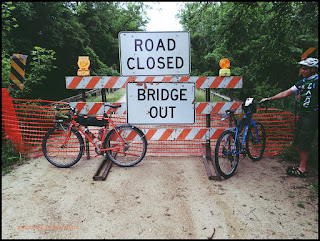 |
| Don't fear the weather! It's waterproof. |
Brooks saddles traditionally were all leather and as such, weren't good to get wet. Wet leather stretches, shrinks, cracks, and rots, which leaves you with a not so great leather saddle, eventually. Now, I own two Brooks leather B-17 models, and I tend to try to only ride them when it is drier to save myself the trouble of covering it when it is raining or from having to do maintenance sooner than I'd like, which is basically never for a bicycle saddle. That's the unvarnished truth. Saddle maintenance seems like an oxymoron. Saddles should be ridden until such time that they fall apart, break down, and/or hurt your posterior. Hopefully that is a ton of miles down the road or trail. Yes.....I have done maintenance on my Brooks, but I'd rather not have to get another one to take care of.
Enter the Cambium series of saddles which has tackled the issue of weather by using vulcanized rubber and organic cotton as a material instead of leather. This is stretched across a simple frame work, much like an original Brooks, only the materials are different. The frame is an aluminum casting for the back and front with steel rails and the rivets are a two piece affair and are screwed together instead of the usual method which is used on the leather models.
 |
| So far.......so good. |
First Impressions: Out of the box the Cambium feels stiff and hard, but that's because it needs the full weight of your body on it to work in the desired fashion. In fact, if you have the saddle mounted on a seat post and that inserted securely into a frame, the shell of the Cambium has a nice, flexible feel, so do not think it is stiff and hard if you handle it in the box.
The Cambium C-17 comes in a few colors and mine is "Slate". It is a grayish-blue hue, and it goes well with the T-6's graphics. It mounted well and I set it up with the "peak", or nose of the saddle, slightly upward as recommended. The first time I sat on it I could feel that it had a flexible shell and I thought it might be too soft. However; after a few minutes of riding the saddle I never even noticed the flexible shell. It basically was one of those invisible component moments. Let's hope it stays that way.
 |
| The underside of the saddle shows the natural vulcanized rubber shell. |
I am a big believer in the "3+ hour rule". That rule says that any saddle worth keeping will still be comfortable after three hours straight of riding. At least from my experience, this seems to hold true. I have been on many saddles that were fantastic feeling up to the three hour mark but after that became a torture device. Brooks B-17 models have passed this test with me, so I am hopeful this one will as well.
The Brooks site is interesting in that for any model they sell they list the good words from customers as well as the bad ones. It's pretty hilarious, actually, because there are as many horror stories about the C-17 as there are glowing praises. I know that from my own research amongst users I know and from bike shop folks who have direct feedback to share, the C-17 seems to either fit like a dream and be a rider's favorite saddle, or it isn't at all a good feeling one, and the buyer flips it almost immediately. I will say that I am pretty sure I am not flipping this saddle soon, but we will wait for that three plus hour ride to happen and then we will all know. I once had a fizik Arione saddle I thought was the bees knees until I rode it more than three hours than I immediately ditched it.
Note: Guitar Ted bought this saddle with his own damn money and was not bribed nor paid for these words. Stay tuned for more soon.......


























